As you look back on 2015, have you considered and celebrated your successes? How do you define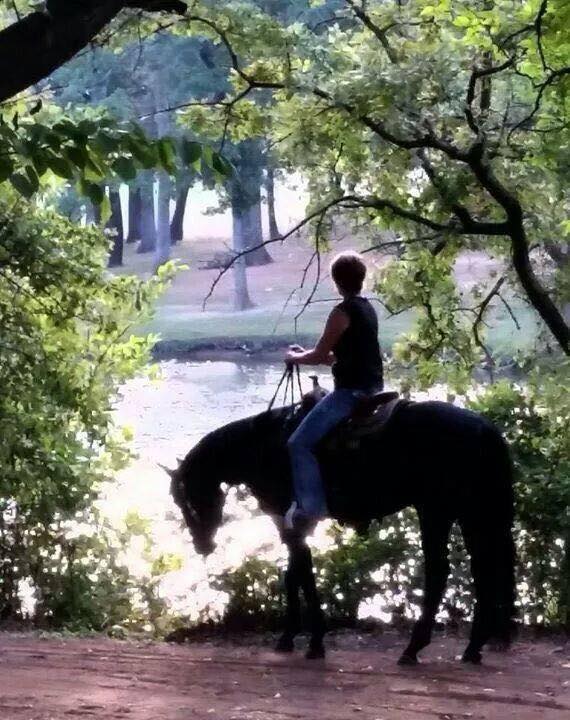 success? Stephen Covey suggests that success is very personal, and each individual has a different definition. For some, wealth or fame makes a person successful. Others consider the quantity or quality of their relationships. Webster’s dictionary defines it as the accomplishment of an aim or purpose, the attainment of popularity or profit or as a person or thing that achieves desired aims or attains prosperity. At MM Training and Consulting we believe that having a solid foundation of horsemanship and relationship skills, rooted in faith and principle, coupled with a strong work ethic and commitment to growth, leads to success. We celebrate the successes we’ve had in the last couple of years and share them with you.
success? Stephen Covey suggests that success is very personal, and each individual has a different definition. For some, wealth or fame makes a person successful. Others consider the quantity or quality of their relationships. Webster’s dictionary defines it as the accomplishment of an aim or purpose, the attainment of popularity or profit or as a person or thing that achieves desired aims or attains prosperity. At MM Training and Consulting we believe that having a solid foundation of horsemanship and relationship skills, rooted in faith and principle, coupled with a strong work ethic and commitment to growth, leads to success. We celebrate the successes we’ve had in the last couple of years and share them with you.
Foundation of horsemanship and relationship skills
In 2014, when Marcia decided to compete in the American Horsewoman’s Challenge, none of us knew how much it would test her horsemanship skills and all of our relationship skills. The three components of the Challenge – Liberty, Cowboy Dressage, and Competitive Trail – seemed fun and interesting. Liberty and Cowboy Dressage were new to us but we had always had a systematic ground-training program and liberty appeared to just be the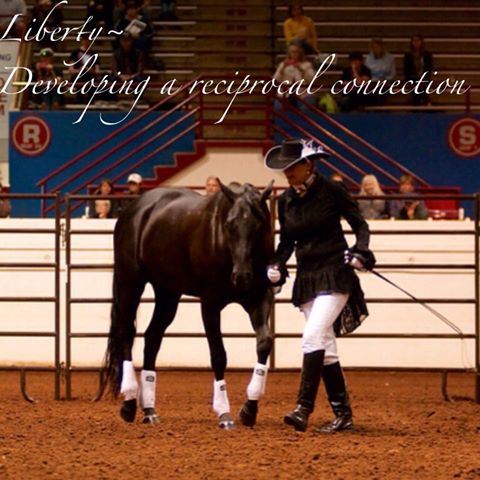 next step. Sign us up – we were ready to take on the Challenge! It didn’t take long for us to figure out that liberty was a whole new ball game. Marcia spent hours and hours working with her young gelding, Stretch, to prepare for the liberty section of the Challenge. Never had their relationship been so tested, and never had Marcia worked a horse on the ground to this degree. It was intense; yet, the rewards were evident and lasting. Marcia’s horsemanship went to a whole new level as she experienced a new degree of awareness of her body language and developed a deeper connection with Stretch. This was success before we ever even got to Oklahoma and the competition.
next step. Sign us up – we were ready to take on the Challenge! It didn’t take long for us to figure out that liberty was a whole new ball game. Marcia spent hours and hours working with her young gelding, Stretch, to prepare for the liberty section of the Challenge. Never had their relationship been so tested, and never had Marcia worked a horse on the ground to this degree. It was intense; yet, the rewards were evident and lasting. Marcia’s horsemanship went to a whole new level as she experienced a new degree of awareness of her body language and developed a deeper connection with Stretch. This was success before we ever even got to Oklahoma and the competition.
On the people side of things, we developed a team to take our show on the road. Kori, Marcia and I drove all the way to Oklahoma in two days. We spent five days there in full-tilt competition mode. Then we spent three days driving back. It took extreme thought, energy, 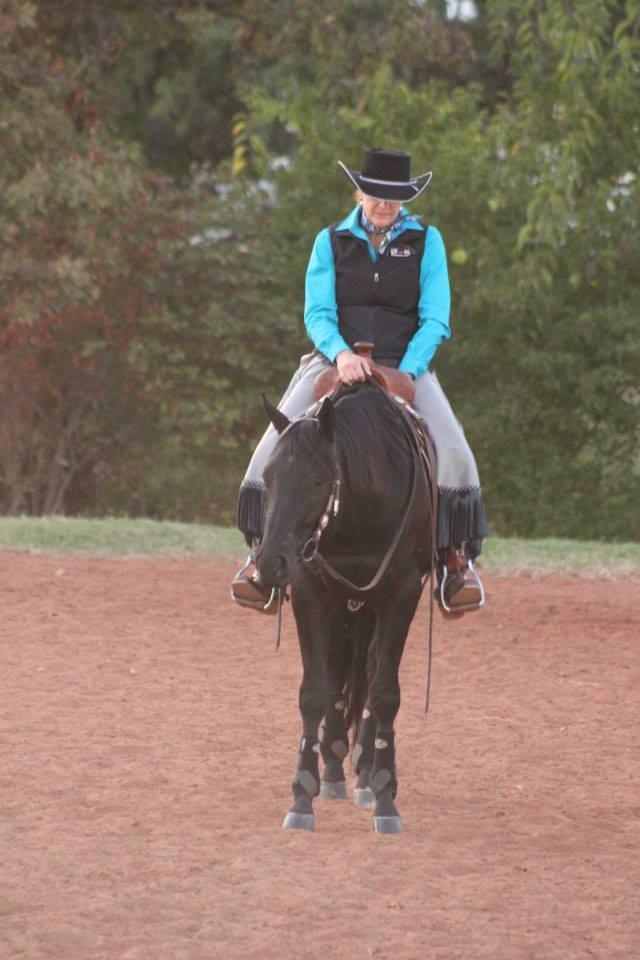 commitment, communication and tolerance, for us not only to survive the trip but also to triumph in the midst of stress. We worked as a team, gave each other grace, and appreciated each other’s strengths. Many people commented on how great our team was and how well we worked together. This was the picture of success.
commitment, communication and tolerance, for us not only to survive the trip but also to triumph in the midst of stress. We worked as a team, gave each other grace, and appreciated each other’s strengths. Many people commented on how great our team was and how well we worked together. This was the picture of success.
There were the external rewards of Marcia’s placing first in Cowboy Dressage and top 5 overall. The money, trophies and kudos were nice. The true success came from the deepening of relationships, both horse and human.
Rooted in faith and principles
Zappos CEO, Tony Hsieh, says success is about living in accordance with your values.
“Your personal core values define who you are. For individuals, character is destiny,” he says.
Going into the 2014 American Horsewoman’s Challenge, we knew that there would be some testing of our horsemanship principles. The Challenge was specifically for trainers, and had a time constraint of six months. The horses could have no more than ten rides at the beginning of the training period and in many cases that meant the horse would be young. In Marcia’s case, Stretch was a 3 year old. I figured with the expertise we were facing in terms of the trainers 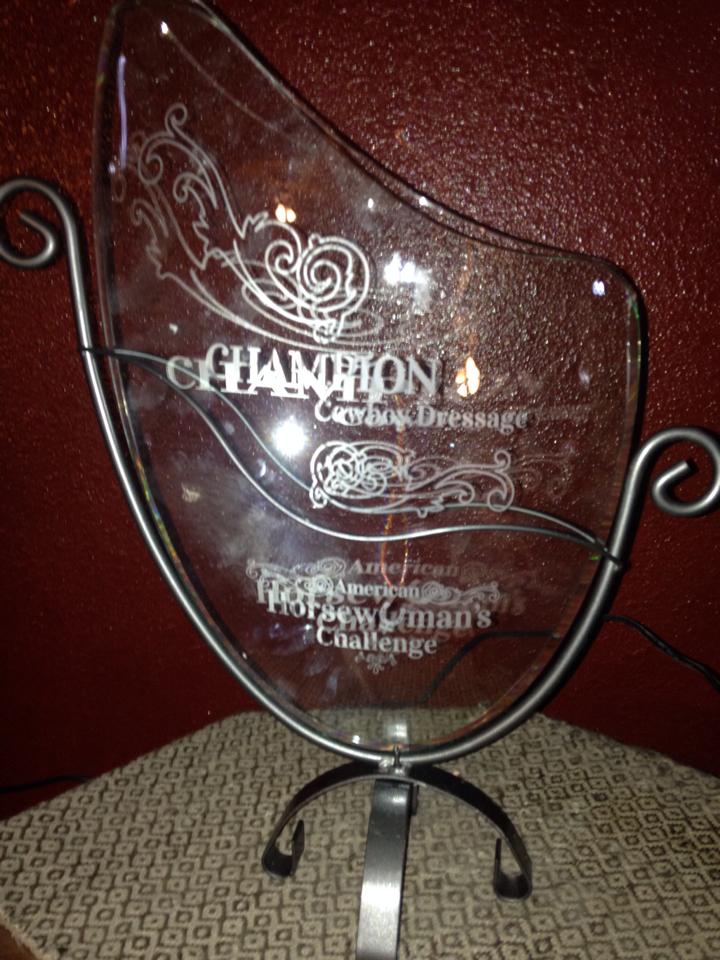 competing, Marcia would have to expect to reach a level of training where Stretch would be able to do a consistent flying lead change. That would potentially be a physical, mental and emotional stress for him. Marcia and I sat down to talk about what she wanted to achieve during this competition. We didn’t talk about placings or money or notoriety. We talked about the best way to take care of Stretch mentally, emotionally and physically and how to bring glory to God while we were there. Setting parameters to stay within the boundaries of our faith and principles helped us achieve freedom to easily make the decisions that needed to be made along the way. In the end, Stretch was able to do multiple beautiful flying lead changes as well as perform bridleless. But the real success was setting the boundaries that we return to again and again to help us stay in alignment with our faith and beliefs. This was success.
competing, Marcia would have to expect to reach a level of training where Stretch would be able to do a consistent flying lead change. That would potentially be a physical, mental and emotional stress for him. Marcia and I sat down to talk about what she wanted to achieve during this competition. We didn’t talk about placings or money or notoriety. We talked about the best way to take care of Stretch mentally, emotionally and physically and how to bring glory to God while we were there. Setting parameters to stay within the boundaries of our faith and principles helped us achieve freedom to easily make the decisions that needed to be made along the way. In the end, Stretch was able to do multiple beautiful flying lead changes as well as perform bridleless. But the real success was setting the boundaries that we return to again and again to help us stay in alignment with our faith and beliefs. This was success. 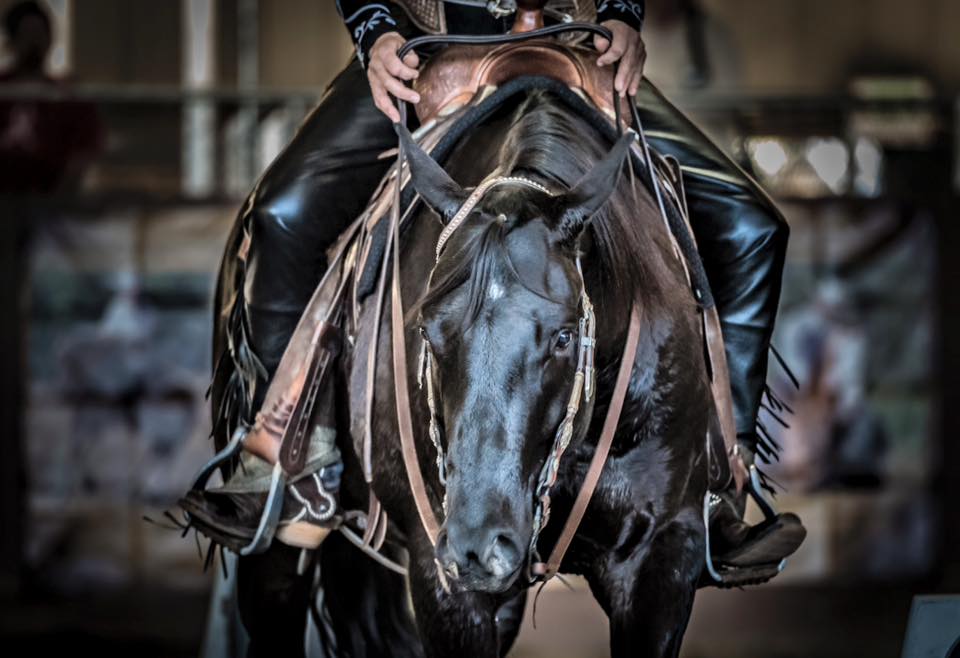
When Marcia and Stretch competed in the Top Hand competition at the Cowboy Dressage World Finals Gathering in 2015, we returned to the values and principles of taking care of Stretch mentally, emotionally, and physically. This included turn out and rest time at the show, not drilling patterns, not expecting more than Stretch had been trained for, taking time to connect with him, and maintaining his usual good routine of care. Top Hand stretched over several days and included increasing levels of stress. Stretch handled it all beautifully and he and Marcia came away as Reserve Champion Top Hand. That’s the payoff for sticking by your values and principles while under the pressures of competition.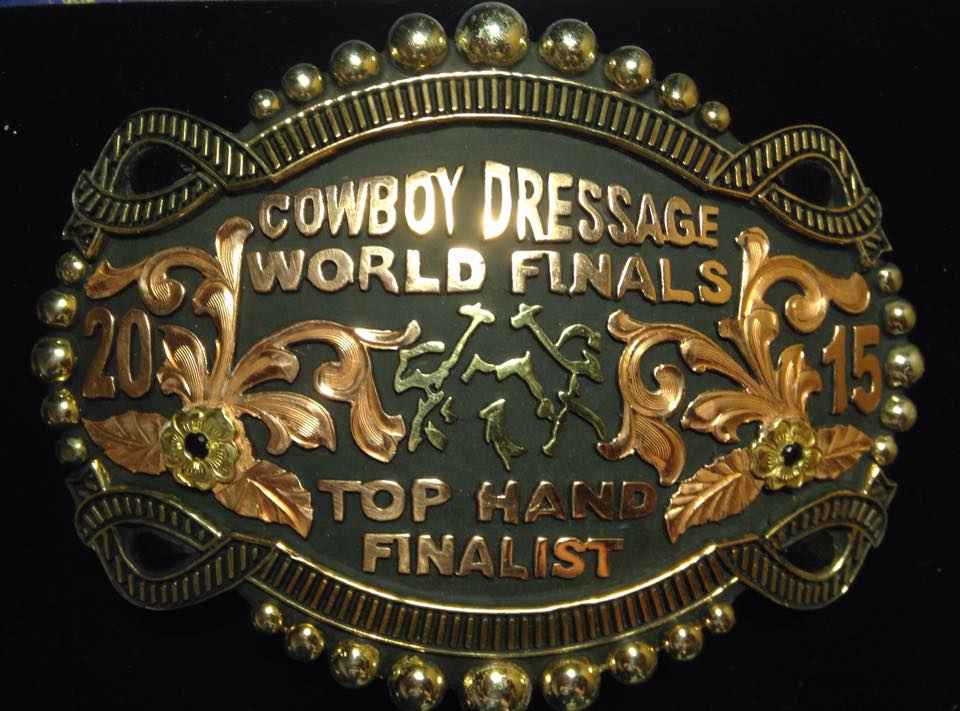
Work ethic
Thomas Edison - holder of over 1,000 patents - had an insane work ethic. He stated, “Success is 1% inspiration, 99% perspiration.”
People sometimes discount the value of hard work. Sayings like “work smarter, not harder” are valid in certain situations, but often the difference between success and failure is the amount of “perspiration equity” that has been invested.
When Marcia was planning for 2015 and considering new challenges, I mentioned to her that her older gelding, Sam, looked like an excellent Cowboy Dressage prospect. He is a reining cow horse, with a nice handle and amazing athletic ability. I had a picture in my head of Marcia and Sam doing a La Garrocha freestyle routine. Marcia could see the vision, and off she went. 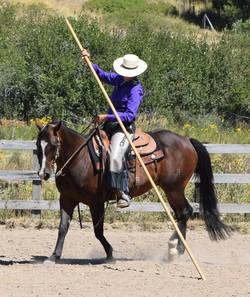
Traditionally, the Garrocha was a pole used by vaqueros to work cattle, and especially fight bulls. Today, the Garrocha pole is used as a prop in a kind of dance with horse and rider. It requires surprising precision and control to achieve the perfect circles and other movements with the pole. Then there is the difficulty of handling the pole in a graceful manner while riding the horse one-handed with soft feel. Holding a fourteen-foot pole in one hand can become shockingly difficult and awkward when doing a rollback or spin.
There was no doubt that Sam had what it took physically, and mentally he is a happy boy who can handle the stress of learning very well. It was the emotional part that we knew would be tricky. He has a ton of energy, can be quite silly when exposed to new things or places, and has a hard time being focused and precise. Just to get his energy to a level where he could focus on learning took a lot of time each ride. It was hours and hours of riding, day after day, which got Sam to the point where he was able to perform successfully. Marcia’s work ethic really came to the forefront and it paid off. Success was measured by Sam’s ability to listen and focus, his soft response, and his happy expression. The freestyle wins and placings at the 2015 Cowboy Dressage Gatherings in Bend, Oregon, and Rancho Murieta, California, were just the icing on the cake.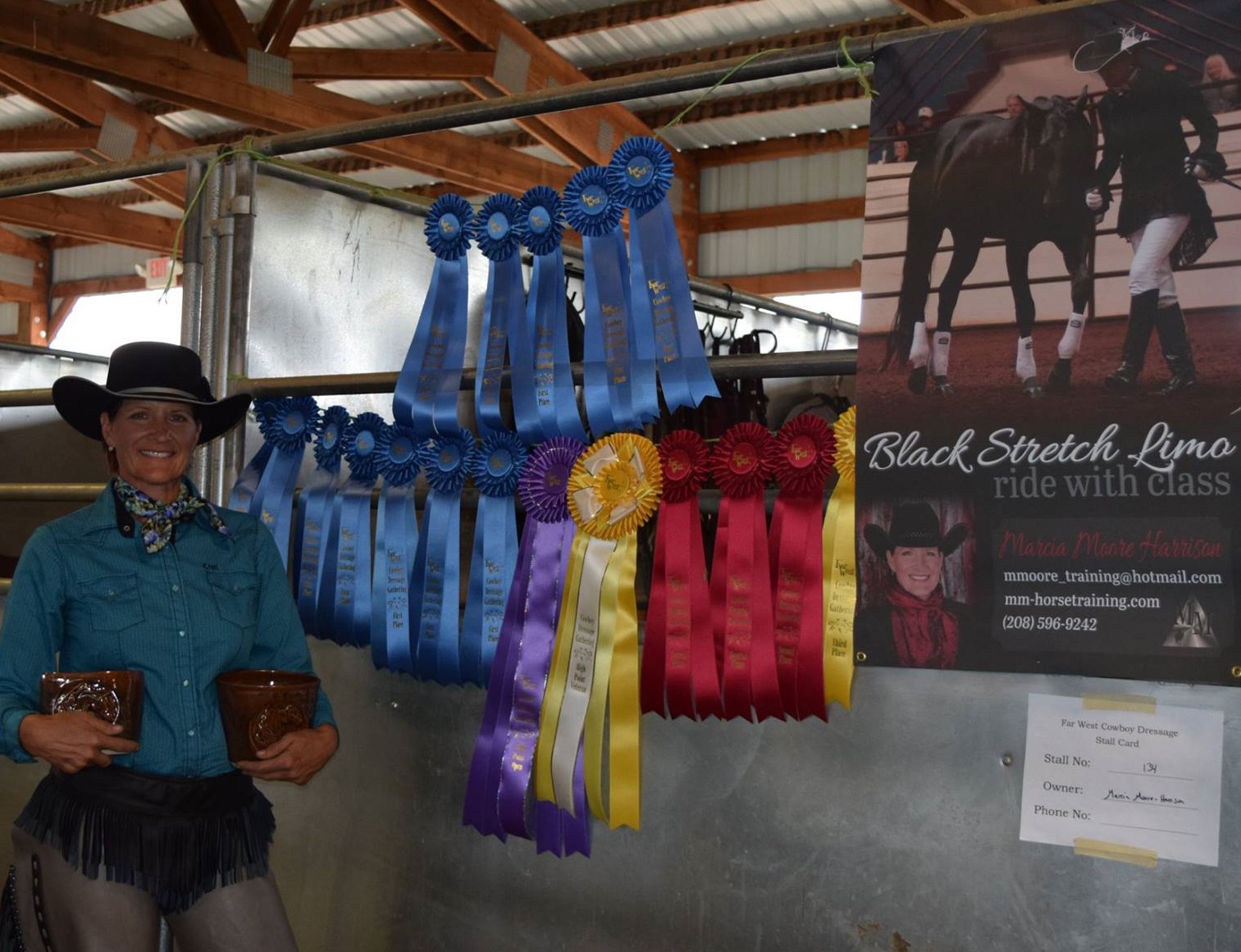
Commitment to growth
Taking on a new discipline in the midst of preparing for the biggest competition you have ever faced may sound a bit crazy. But when Cowboy Dressage was billed as part of the American Horsewoman’s Challenge, it was exciting to dive into learning about this specialty. We had experienced the Cowboy Dressage culture at the 2013 World Gathering and knew that it was a great fit for us. Now, we just had to learn all the details. Simple, right? Well, in a way it was and in a way it wasn’t. Cowboy Dressage’s guiding principle of soft feel was something we had been living for a long time. But there were many things to learn about forward movement, lifting the forehand, the court, the challenge court and the nuances of the detailed simplicity that is Cowboy 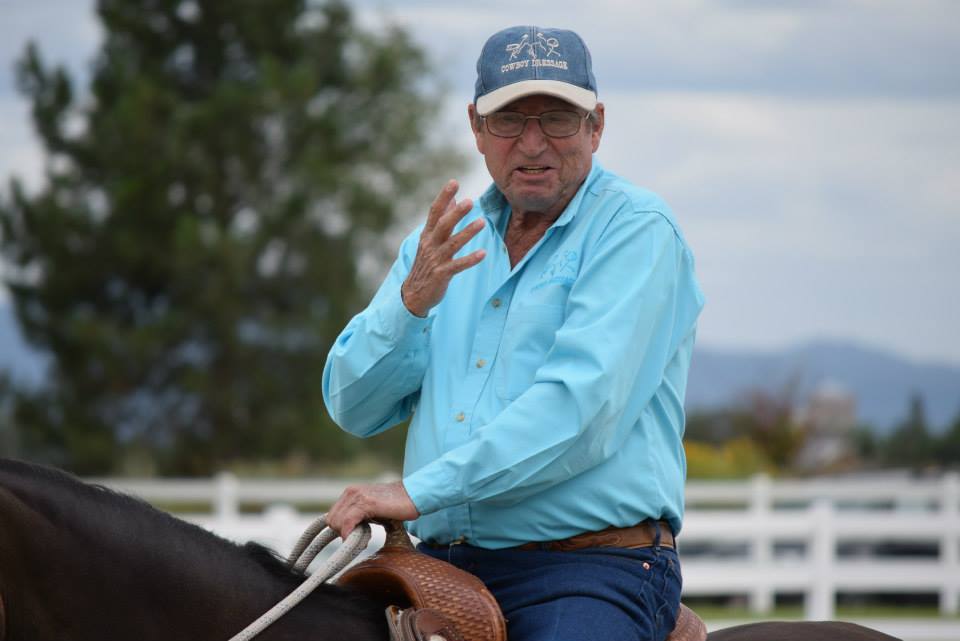 Dressage. We decided we wanted to learn it from the founder himself, Eitan Beth-Halachmy, and found a clinic with him that was within driving range, near Tahoe, in Nevada. We invested the time, money, and “sweat equity” and we had great return on our investment. When you attend a clinic you learn both what to do and what not to do, and there is wisdom in both. Getting to know Eitan and his wife, Debbie, and discovering that we loved Cowboy Dressage as much as we thought we would, was life and goal changing. Our commitment to learning and growing in Cowboy Dressage has led to many successes, both personally and professionally. We have met countless
Dressage. We decided we wanted to learn it from the founder himself, Eitan Beth-Halachmy, and found a clinic with him that was within driving range, near Tahoe, in Nevada. We invested the time, money, and “sweat equity” and we had great return on our investment. When you attend a clinic you learn both what to do and what not to do, and there is wisdom in both. Getting to know Eitan and his wife, Debbie, and discovering that we loved Cowboy Dressage as much as we thought we would, was life and goal changing. Our commitment to learning and growing in Cowboy Dressage has led to many successes, both personally and professionally. We have met countless 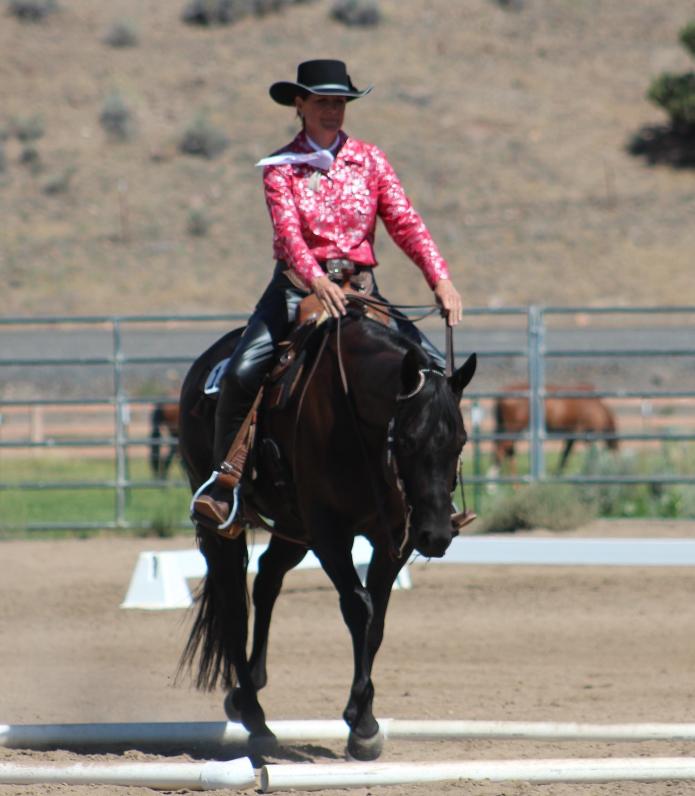 amazing people with similar faith and principles, developed wonderful relationships, experienced a culture of kindness, worked hard and had fun, and grown in our horsemanship skills. That’s what we call success!
amazing people with similar faith and principles, developed wonderful relationships, experienced a culture of kindness, worked hard and had fun, and grown in our horsemanship skills. That’s what we call success!
We invite you to share in numerous upcoming success opportunities in 2016! Check out our Upcoming Events here.